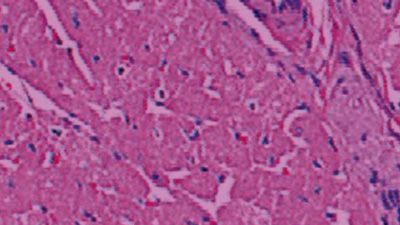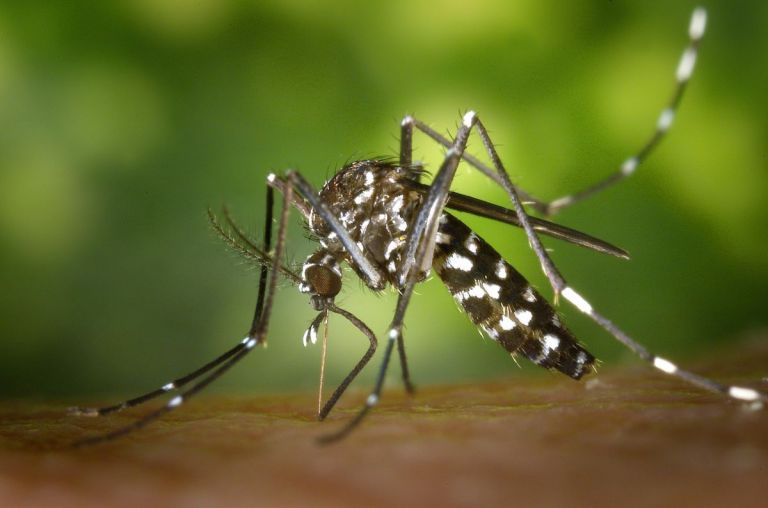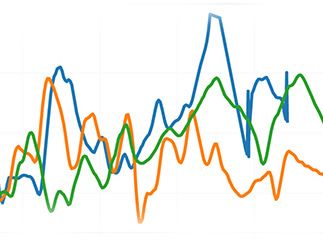- Home
- People
- Chief Investigators
- Kevin Burrage
Professor Kevin Burrage
Chief Investigator, Professor
Queensland University of Technology
My research focuses on the use of innovative modelling and simulation methodologies for solving important problems in biology and physiology. A particular focus is on variability and heterogeneity. I have had a long and varied academic life. Academic highlights include
Federation Fellow of the ARC: 2004-2008.
Shared position between Oxford University and QUT: 2007-2015
Fellow of New College Oxford : 2007-2015
Visiting Professor Oxford: 2016 - 2019.
Research Interests:
Computational biology
Modelling electrophysiology of the heart
Stochastic simulation
Qualifications:
BSc, Auckland: 1970-1972
MSc, First class, Auckland: 1973
PhD, Auckland: 1977
Projects
Publications
Book Chapters
MacNamara, S., McLean W., & Burrage K.
(2019). Wider contours and adaptive contours.
(Wood, D., De Gier J., Praeger C. E., & Tao T., Ed.).2017 MATRIX Annals. 2, 79-98. doi: 10.1007/978-3-030-04161-8_7
Burrage, K., Burrage P., Leier A., & Marquez-Lago T.
(2017). A Review of Stochastic and Delay Simulation Approaches in Both Time and Space in Computational Cell Biology.
(Holcman, D., Ed.).Stochastic Processes, Multiscale Modeling, and Numerical Methods for Computational Cellular Biology. 241–261. doi: 10.1007/978-3-319-62627-7_11
Invited talks, refereed proceedings and other conference outputs
Browning, A. P., Warne D., Burrage K., Baker R. E., & Simpson M. J.
(2020). Parameter identifiability for mechanistic models in biology.
ACEMS 2020 Virtual Retreat.
Farquhar, M., Lawson B., & Burrage K.
(2020). Graph-based Homogenization techniques for modelling cardiac fibrosis.
ANZIAM.
Lawson, B. A. J., Burrage K., Burrage P., Turner I., Santos R. W. dos, Jakes D., et al.
(2019). Mathematically Coping with Microfibrosis.
Mathematical and Computational Biology Seminar Series.
Burrage, K.
(2019). Perlin noise and microfibrosis.
17th International Conference of Numerical Analysis and Applied Mathematics.
Burrage, P., Burrage K., & MacNamara S.
(2019). Integrated Approaches for Stochastic Chemical Kinetics.
17th International Conference of Numerical Analysis and Applied Mathematics.
Burrage, K., Burrage P., & MacNamara S.
(2019). Reflectionless models via Bessel Functions.
ANZIAM Conference 2019.
Lawson, B. A. J., Jakes D., Burrage K., Burrage P., Drovandi C. C., & Bueno-Orovio A.
(2019). Perlin noise for automatic generation of complex spatial patterns: an application to cardiac fibrosis.
ANZIAM Conference 2019.
Burrage, K.
(2019). Population of models and hetereogeneity.
Recent Developments in Mathematical and Computational Biomedicine.
Bednarz, T., Kim J., Brown R., James A., Burrage K., Clifford S., et al.
(2016). Virtual reality for conservation.
Web3D 2016: 21st International Conference on Web3D Technology. 177–178. doi: 10.1145/2945292.2945319
Psaltis, S. T. P., Vercelloni J., Kim J., Brown R., James A., Burrage K., et al.
(2016). Virtual reality for conservation.
International Conference on Web3D Technology. 177–178. doi: 10.1145/2945292.2945319
Burrage, P., Donovan D., Thompson B., & Burrage K.
(2015). Populations of Models, Experimental Designs and Coverage of Parameter Space by Latin Hypercube and Orthogonal Sampling.
International Conference On Computational Science, ICCS 2015 - Computational Science at the Gates of Nature. doi: 10.1016/j.procs.2015.05.383
Psaltis, S. T. P., Burrage K., & Farrell T.
(2015). Mathematical modelling of gas production in a Coal Seam Gas (CSG) field.
Eleventh International Conference on CFD in the Minerals and Process Industries. doi: 10.1016/j.energy.2015.05.107
Burrage, K., Burrage P., Donovan D. M., McCourt T. A., & Thompson H. B.
(2014). Estimates on the Coverage of Parameter Space using Populations of Models.
Environment and Water Resource Management. 81-86. doi: 10.2316/P.2014.813-013
Journal Articles
Browning, A. P., Sharp J. A., Mapder T., Baker C. M., Burrage K., & Simpson M. J.
(2021). Persistence as an optimal hedging strategy.
Biophysical Journal. 120(1), 133-142. doi: 10.1016/j.bpj.2020.11.2260
Sharp, J. A., Burrage K., & Simpson M. J.
(2021). Implementation and acceleration of optimal control for systems biology.
Journal of The Royal Society Interface. 18(181), 20210241. doi: 10.1098/rsif.2021.0241
Sharp, J. A., Browning A. P., Mapder T., Baker C. M., Burrage K., & Simpson M. J.
(2020). Designing combination therapies using multiple optimal controls.
Journal of Theoretical Biology. 497, 110277. doi: 10.1016/j.jtbi.2020.110277
Burrage, K., Burrage P., Davis J., Bednarz T., Kim J., Vercelloni J., et al.
(2020). A stochastic model of jaguar abundance in the Peruvian Amazon under climate variation scenarios.
Ecology and Evolution. 10(19), 10829 - 10850. doi: 10.1002/ece3.6740
Lawson, B. A. J., Oliveira R. S., Berg L. A., Silva P. A. A., Burrage K., & Santos R. Weber dos
(2020). Variability in electrophysiological properties and conducting obstacles controls re-entry risk in heterogeneous ischaemic tissue.
Philosophical Transactions of the Royal Society A: Mathematical, Physical and Engineering Sciences. 378(2173), 20190341. doi: 10.1098/rsta.2019.0341
Wu, J., Wang Y-G., Burrage K., Tian Y-C., Lawson B., & Ding Z.
(2020). An improved firefly algorithm for global continuous optimization problems.
Expert Systems with Applications. 149, 113340. doi: 10.1016/j.eswa.2020.113340
Burrage, K., Burrage P., & MacNamara S.
(2020). The reflectionless properties of Toeplitz waves and Hankel waves: an analysis via Bessel functions.
arXiv. arXiv:2005.04561 .
Sharp, J. A., Browning A. P., Mapder T., Burrage K., & Simpson M. J.
(2019). Optimal control of acute myeloid leukaemia.
Journal of Theoretical Biology. 470, 30–42. doi: 10.1016/j.jtbi.2019.03.006
Mapder, T., Aaskov J., & Burrage K.
(2019). Administration of defective virus via bang-bang optimal control inhibits dengue transmission.
bioRxiv. doi: 10.1101/837849
Komori, Y., Eremin A., & Burrage K.
(2019). S-ROCK methods for stochastic delay differential equations with one fixed delay.
Journal of Computational and Applied Mathematics . 353, 345-354. doi: 10.1016/j.cam.2018.12.042
Sharp, J. A., Browning A. P., Mapder T., Baker C. M., Burrage K., & Simpson M. J.
(2019). Designing combination therapies using multiple optimal controls.
bioRxiv. doi: 10.1101/850693
Zhou, X., Bueno-Orovio A., Schilling RJ., Kirkby C., Denning C., Rajamohan D., et al.
(2019). Investigating the complex arrhythmic phenotype caused by the gain-of-function mutation KCNQ1-G229D.
Frontiers in Physiology. 10, 259. doi: 10.3389/fphys.2019.00259
Zeng, F., Turner I., Burrage K., & Wright S. J.
(2019). A discrete least squares collocation method for two-dimensional nonlinear time-dependent partial differential equations.
Journal of Computational Physics. 394, 177 - 199. doi: 10.1016/j.jcp.2019.05.044
Tang, M., Gandhi NS., Burrage K., & Gu YT.
(2019). Interaction of gold nanosurfaces/nanoparticles with collagen-like peptides.
Physical Chemistry Chemical Physics . 21(7), 3701-3711. doi: 10.1039/c8cp05191g
Guo, L., Zeng F., Turner I., Burrage K., & Karniadakis G. Em
(2019). Efficient Multistep Methods for Tempered Fractional Calculus: Algorithms and Simulations.
SIAM Journal on Scientific Computing. 41(4), A2510 - A2535. doi: 10.1137/18M1230153
Mapder, T., Clifford S., Aaskov J., & Burrage K.
(2019). A population of bang-bang switches of defective interfering particles makes within-host dynamics of dengue virus controllable.
(Papin, J. A., Ed.).PLOS Computational Biology. 15(11), e1006668. doi: 10.1371/journal.pcbi.1006668
Abdullah, FA., Liu F., Burrage P., Burrage K., & Li T.
(2018). Novel analytical and numerical techniques for fractional temporal SEIR measles model.
Numerical Algorithms. 79(1), 19-40. doi: 10.1007/s11075-017-0426-6
Muszkiewicz, A., Liu X., Bueno-Orovio A., Lawson B. A. J., Burrage K., Casadei B., et al.
(2018). From ionic to cellular variability in human atrial myocytes: an integrative computational and experimental study.
American Journal of Physiology-Heart and Circulatory Physiology. 314(5), H895 - H916. doi: 10.1152/ajpheart.00477.2017
Lawson, B. A. J., Burrage K., Burrage P., Drovandi C. C., & Bueno-Orovio A.
(2018). Slow Recovery of Excitability Increases Ventricular Fibrillation Risk as Identified by Emulation.
Frontiers in Physiology. 9, 1114. doi: 10.3389/fphys.2018.01114
Lawson, B. A. J., Drovandi C. C., Cusimano N., Burrage P., Rodriguez B., & Burrage K.
(2018). Unlocking data sets by calibrating populations of models to data density: A study in atrial electrophysiology.
Science Advances. 4(1), e1701676. doi: 10.1126/sciadv.1701676
Zeng, F., Turner I., Burrage K., & Karniadakis G. Em
(2018). A New Class of Semi-Implicit Methods with Linear Complexity for Nonlinear Fractional Differential Equations.
SIAM Journal on Scientific Computing. 40(5), A2986 - A3011. doi: 10.1137/18M1168169
Burrage, K., Burrage P., Turner I., & Zeng F.
(2018). On the Analysis of Mixed-Index Time Fractional Differential Equation Systems.
Axioms. 7(2), 25. doi: 10.3390/axioms7020025
Donovan, D., Burrage K., Burrage P., McCourt TA., Thompson B., & Yazici EŞ.
(2018). Estimates of the coverage of parameter space by Latin Hypercube and Orthogonal Array-based sampling.
Applied Mathematical Modelling. 57, 553-564. doi: 10.1016/j.apm.2017.11.036
Zeng, F., Turner I., & Burrage K.
(2018). A Stable Fast Time-Stepping Method for Fractional Integral and Derivative Operators.
Journal of Scientific Computing. 77(1), 283 - 307. doi: 10.1007/s10915-018-0707-9
Simmons, A., Burrage P., Nicolau D. V., Lakhani S. R., & Burrage K.
(2017). Environmental factors in breast cancer invasion: a mathematical modelling review.
Pathology. doi: 10.1016/j.pathol.2016.11.004
Carusi, A., Rodriguez B., & Burrage K.
(2017). Validation and models in computational biomedical sciences: Philosophy, science, engineering.
Tang, M., Li T., Gandhi N. S., Burrage K., & Gu YT.
(2017). Heterogeneous nanomechanical properties of type I collagen in longitudinal direction.
Biomechanics and modeling in mechanobiology. 16(3), 1023–1033. doi: 10.1007/s10237-016-0870-6
Bueno-Orovio, A., & Burrage K.
(2017). Exact solutions to the fractional time-space Bloch–Torrey equation for magnetic resonance imaging.
Communications in Nonlinear Science and Numerical Simulation. 52, 91–109. doi: 10.1016/j.cnsns.2017.04.013
Komori, Y., Cohen D., & Burrage K.
(2017). Weak Second Order Explicit Exponential Runge–Kutta Methods for Stochastic Differential Equations.
SIAM Journal on Scientific Computing. 39(6), A2857–A2878. doi: 10.1137/15M1041341
Cusimano, N.., Burrage K., Turner I., & Kay D..
(2017). On reflecting boundary conditions for space-fractional equations on a finite interval: Proof of the matrix transfer technique.
Applied Mathematical Modelling. 42, 554 - 565. doi: 10.1016/j.apm.2016.10.021
Zheng, M., Liu F., Liu Q., Burrage K., & Simpson M. J.
(2017). Numerical solution of the time fractional reaction–diffusion equation with a moving boundary.
Journal of Computational Physics. 338, 493–510. doi: 10.1016/j.jcp.2017.03.006
Psaltis, S. T. P., Farrell T., Burrage K., Burrage P., McCabe P., Moroney T. J., et al.
(2017). Using population of models to investigate and quantify gas production in a spatially heterogeneous coal seam gas field.
Applied Mathematical Modelling. 49, 338 - 353. doi: 10.1016/j.apm.2017.05.005
Burrage, K., Cardone A., D'Ambrosio R., & Paternoster B.
(2017). Numerical solution of time fractional diffusion systems.
Applied Numerical Mathematics. 116, 82–94. doi: 10.1016/j.apnum.2017.02.004
Drovandi, C. C., Cusimano N., Psaltis S. T. P., Lawson B. A. J., Pettitt A.N., Burrage P., et al.
(2016). Sampling methods for exploring between-subject variability in cardiac electrophysiology experiments.
Journal of The Royal Society Interface. 13(121), doi: 10.1098/rsif.2016.0214
Niu, Y., Burrage K., & Chen L.
(2016). Modelling biochemical reaction systems by stochastic differential equations with reflection.
Journal of Theoretical Biology. 396, 90-104. doi: 10.1016/j.jtbi.2016.02.010
Muszkiewicz, A., Britton O. J., Gemmell P., Passini E., Sánchez C., Zhou X., et al.
(2016). Variability in cardiac electrophysiology: Using experimentally-calibrated populations of models to move beyond the single virtual physiological human paradigm.
Progress in Biophysics & Molecular Biology.. 120(1-3), 115-127. doi: 10.1016/j.pbiomolbio.2015.12.002
Bueno-Orovio, A., Teh I., Schneider J. E., Burrage K., & Grau V.
(2016). Anomalous diffusion in cardiac tissue as an index of myocardial microstructure.
IEEE Transactions on Medical Imaging. 35(9), 2200-2207. doi: 10.1109/TMI.2016.2548503
Chen, S., Liu F., Jiang X., Turner I., & Burrage K.
(2016). Fast finite difference approximation for identifying parameters in a two-dimensional space-fractional nonlocal model with variable diffusivity coefficients.
SIAM Journal on Numerical Analysis. 54(2), 606-624. doi: 10.1137/15M1019301
Zhou, X., Bueno-Orovio A., Orini M., Hanson B., Hayward M., Taggart P., et al.
(2016). In vivo and in silico investigation into mechanisms of frequency dependence of repolarization alternans in human ventricular cardiomyocytes.
Circulation Research. 118(2), 266-278. doi: 10.1161/CIRCRESAHA.115.307836
Gemmell, P., Burrage K., Rodríguez B. R., & Quinn T. A.
(2016). Rabbit-specific computational modelling of ventricular cell electrophysiology: Using populations of models to explore variability in the response to ischemia.
Progress in Biophysics and Molecular Biology. 121(2), 169-184. doi: 10.1016/j.pbiomolbio.2016.06.003
Pueyo, E., Dangerfield C. E., Britton O. J., Virág L., Kistamás K., Szentandrássy N., et al.
(2016). Experimentally-based computational investigation into beat-to-beat variability in ventricular repolarization and its response to ionic current inhibition.
PLOS ONE. 11(3), doi: 10.1371/journal.pone.0151461
Walmsley, J., Mirams G. R., Pitt-Francis J., Rodriguez B., & Burrage K.
(2015). Application of stochastic phenomenological modelling to cell-to-cell and beat-to-beat electrophysiological variability in cardiac tissue.
Journal of Theoretical Biology. 365, 325-336. doi: 10.1016/j.jtbi.2014.10.029
Niu, Y., Burrage K., & Zhang C.
(2015). Multi-scale approach for simulating time-delay biochemical reaction systems.
IET Systems Biology. 9(1), 31-38. doi: 10.1049/iet-syb.2013.0023
Niu, Y., Zhang C., & Burrage K.
(2015). Strong Predictor-Corrector Approximation for Stochastic Delay Differential Equations.
Journal of Computational Mathematics. 33(6), 587-605. doi: 10.4208/jcm.1507-m4505
Liu, F., Zhuang P., Turner I., Anh V., & Burrage K.
(2015). A semi-alternating direction method for a 2-D fractional FitzHugh–Nagumo monodomain model on an approximate irregular domain.
Journal of Computational Physics. 293, 252-263. doi: 10.1016/j.jcp.2014.06.001
Cusimano, N., Bueno-Orovio A., Turner I., Burrage K., & Talkachova A.
(2015). On the Order of the Fractional Laplacian in Determining the Spatio-Temporal Evolution of a Space-Fractional Model of Cardiac Electrophysiology.
PLOS ONE. 10(12), doi: 10.1371/journal.pone.0143938
Psaltis, S. T. P., Farrell T., Burrage K., Burrage P., McCabe P., Moroney T. J., et al.
(2015). Mathematical modelling of gas production and compositional shift of a CSG (coal seam gas) field: Local model development.
Energy. 88, 621-635. doi: 10.1016/j.energy.2015.05.107
Barrio, M., Burrage K., & Burrage P.
(2015). Stochastic linear multistep methods for the simulation of chemical kinetics.
The Journal of Chemical Physics. 142(6), 64101. doi: 10.1063/1.4907008
Zeng, F., Liu F., Li C., Burrage K., Turner I., & Anh V.
(2014). A Crank--Nicolson ADI Spectral Method for a Two-Dimensional Riesz Space Fractional Nonlinear Reaction-Diffusion Equation.
SIAM Journal on Numerical Analysis. 52(6), 2599-2622. doi: 10.1137/130934192
Székely, T., & Burrage K.
(2014). Stochastic simulation in systems biology.
Computational and Structural Biotechnology Journal. 12(20-21), 14-25. doi: 10.1016/j.csbj.2014.10.003
Székely, T., Burrage K., Mangel M., Bonsall M. B., & Santos F. C.
(2014). Stochastic Dynamics of Interacting Haematopoietic Stem Cell Niche Lineages.
PLoS Computational Biology. 10(9), doi: 10.1371/journal.pcbi.1003794
Publicly available softwares
Browning, A. P., Warne D. J., Burrage K., Baker R. E., & Simpson M. J.
(2020). SDE-Identifiability.





